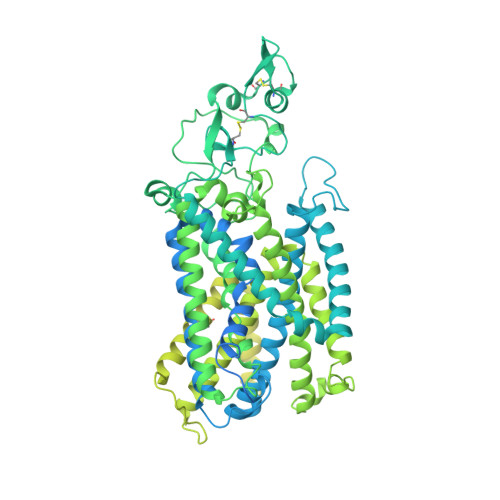Cryo-EM structures of the human cation-chloride cotransporter KCC1.
Liu, S., Chang, S., Han, B., Xu, L., Zhang, M., Zhao, C., Yang, W., Wang, F., Li, J., Delpire, E., Ye, S., Bai, X.C., Guo, J.(2019) Science 366: 505-508
- PubMed: 31649201
- DOI: https://doi.org/10.1126/science.aay3129
- Primary Citation of Related Structures:
6KKR, 6KKT, 6KKU - PubMed Abstract:
Cation-chloride cotransporters (CCCs) mediate the coupled, electroneutral symport of cations with chloride across the plasma membrane and are vital for cell volume regulation, salt reabsorption in the kidney, and γ-aminobutyric acid (GABA)-mediated modulation in neurons. Here we present cryo-electron microscopy (cryo-EM) structures of human potassium-chloride cotransporter KCC1 in potassium chloride or sodium chloride at 2.9- to 3.5-angstrom resolution. KCC1 exists as a dimer, with both extracellular and transmembrane domains involved in dimerization. The structural and functional analyses, along with computational studies, reveal one potassium site and two chloride sites in KCC1, which are all required for the ion transport activity. KCC1 adopts an inward-facing conformation, with the extracellular gate occluded. The KCC1 structures allow us to model a potential ion transport mechanism in KCCs and provide a blueprint for drug design.
Organizational Affiliation:
Department of Biophysics, Department of Pathology of Sir Run Run Shaw Hospital, Zhejiang University School of Medicine, Hangzhou 310058, China.



















